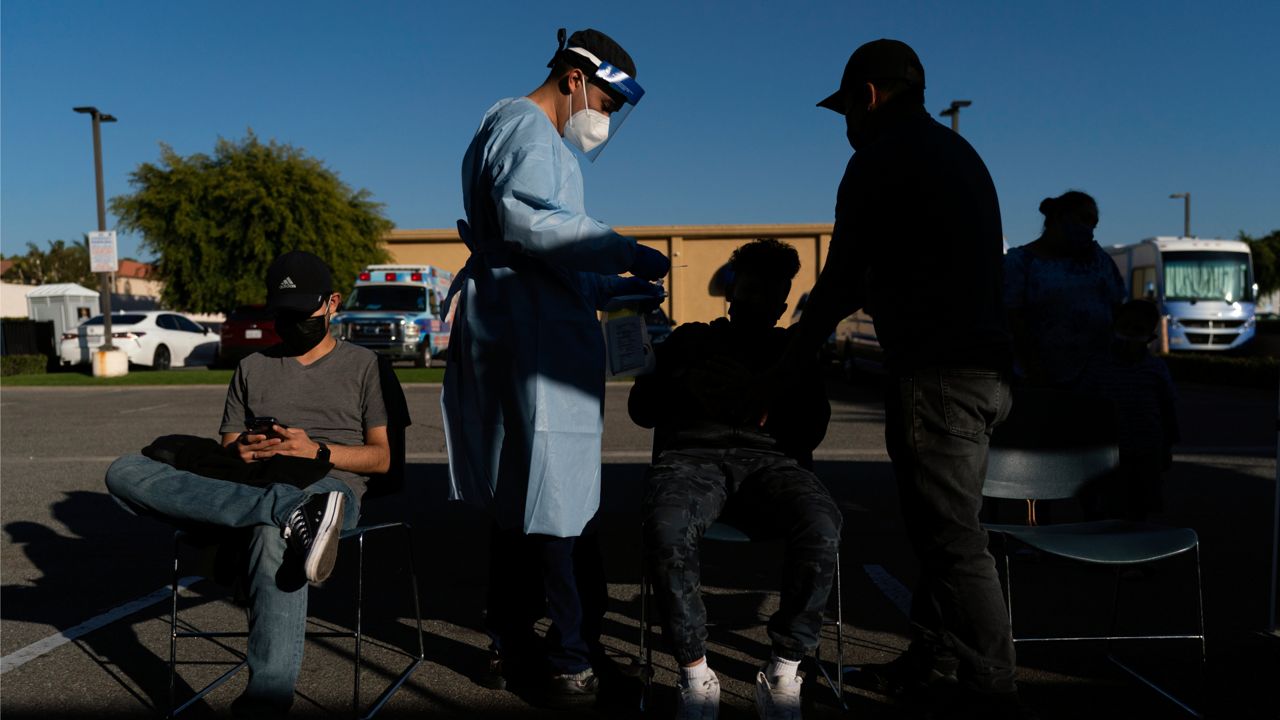SANTA ANA, Calif. (CNS) — The number of coronavirus patients at Orange County hospitals has decreased by four to 299, according to the latest state numbers released Saturday.
Of those patients, 55 were being treated in intensive care, up from 48 the previous day.
The latest figures come two days after local health officials reported that OC’s coronavirus case rates and hospitalizations are still on the upswing, corresponding with an expected winter wave that has occurred in prior years.
Hospitalizations of COVID-positive patients have been on a steady rise since Nov. 11, when there were 105 patients, the Orange County Health Care Agency said.
A year ago at this time, there were 189 patients hospitalized with a COVID-19 infection, but by Christmas, the levels were where they are now. Throughout the pandemic, there have been summer and winter waves, with each wave smaller than the last corresponding wave.
“I firmly predict an increase in hospitalizations, but I’m not willing to say it will be just like last year,” when the new omicron variant took root, Andrew Noymer, an epidemiologist and UC Irvine professor of population health and disease prevention, told City News Service. “The hospitalizations are back to summer levels, so it will be interesting to see where they go. It will exceed summer levels, but probably won’t get to last year’s omicron-driven levels.”
A new variant of omicron, known as omicron BQ, could be behind the most recent wave. It appears to be supplanting omicron BA.5, according to OCHCA data.
COVID-19 is not just an upper respiratory virus, but also has an impact on the circulatory system, so that can increase the risk of stroke and neurological issues, Noymer said.
“We’re seeing all these people with weird sudden deaths — there’s stroke issues, clotting issues,” Noymer said. “We really honestly don’t have a complete handle on all the deleterious effects COVID has had. I can’t quantify getting it three times does this, but I personally would avoid stacking up multiple infections of this virus.”
Noymer encourages residents to wear a mask when indoors, especially when visiting a grocery store or other crowded businesses.
As for the wave of RSV and influenza cases that have Children’s Hospital of Orange County scrambling for bed spaces and medicine, Noymer said the levels aren’t unprecedented.
“Part of the RSV story is hospitals are understaffed,” Noymer said. “The numbers are not that unusual.”
What is unusual is the timing, because children’s hospitals experience a wave this high in the upper respiratory viruses in January and February, Noymer said.
“I don’t know what’s causing this unusual timing,” he said. “The numbers aren’t that too severe or crazy high. It’s just it usually peaks in January, February ... It remains to be seen what it will do.”
The Orange County Board of Supervisors on Tuesday extended its emergency declaration another month to help CHOC officials access medications that are in short supply and to utilize space elsewhere in the hospital for extra beds.
The test positivity rate went from 6.8% to 8.6% as of this week, and increased from 6.8% to 8.3% in the health equity quartile, which measures the communities hardest hit by the pandemic.
The daily case rate per 100,000 increased from 6.7 to 9.1 on a seven-day average with a seven-day lag, and jumped up from 6.8 to 9.4 in the adjusted daily case rate per 100,000 on a seven-day average with a seven-day lag.
The OCHCA reports COVID data every Thursday.
The county logged 3,690 new cases of COVID-19 on Thursday, hiking the cumulative total to 682,885. Six more fatalities were logged, hiking the overall death toll to 7,577.
Of those hospitalized, 68% are incompletely vaccinated or unvaccinated and 68.4% of the COVID-19 patients in intensive care units are incompletely vaccinated or unvaccinated, the agency said.
The positivity rate for those fully vaccinated with a booster went from 10.5 on Nov. 20 to 9.7 on Nov. 27. For those vaccinated with no booster, the rate went from 5.9% to 4.5%. For those not vaccinated, the rate went from 9.8% to 24.5%.
A fully vaccinated person can still contract and transmit COVID, but health officials say the vaccines offer protection against developing severe symptoms that can result in hospitalization and even death.



